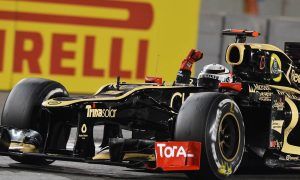
© F1i
THE NEW MGU-K HAS ARRIVED
In the mountains of Spielberg, Renault has released its new MGU-K, eagerly awaited since over one and a half years. Originally planned for the 2017 season, the new electric motor/generator is entirely designed in Viry, and no longer by Magnetti-Marelli. It is said to be lighter and more compact thanks to a new cooling system.
"[The new MGU-K] tackles two things”, Bob Bell, Engineering Director at Renault, explains. “First of all it's lighter so it frees up a bit of ballast, which is always good, so it can affect the centre of gravity of the car a bit more. And it's probably more reliable than the old one, which is a win-win really.”
"Red Bull have elected not to use it and it's their choice. It requires quite a lot of work to be done on the chassis side to accommodate it, and Red Bull and McLaren just chose to delay it for a bit until they were better prepared on the chassis - and they may not be struggling as much as we are on weight so it may be far less of an issue for them."
In fact, Red Bull has chosen not to use the new MGU-K in order to prevent its drivers from starting at the back of the grid (Daniel Ricciardo and Max Verstappen have already exhausted their quota of MGU-K's for the season). As for McLaren, it finally installed a fresh versions of the old spec on the car of Fernando Alonso taking advantage of the replacement of other elements, an operation which forced the team to break the parc fermé rules and thus forced the Spaniard to start from the pitlane (in turn rendering a penalty of ten places for the replacement of the MGU-K inapplicable).

© F1i
NO QUITE A “PARTY MODE” YET
In addition, Renault introduced on its engine a specific mapping for the qualification, intended to bring a slight increase in power:
"I'm not quite sure I'd describe our qualifying mode as a 'party mode' in the same league as what was previously run by other engine manufacturers," Bell said. "No, we have some improvements to the engine that come on a race-by-race basis, we're always finding new ways with these engines to operate them to find a little bit more performance.”
"I think Renault has been a little bit behind the curve on that but we're starting to pick it up now and we've got a small improvement but it's not night-and-day stuff."
It is not excluded, however, that the band range of this more aggressive mapping is gradually widened:
"It depends what mode you're talking about. There are some modes that we can develop over the course of the season that will be available at every lap.”
"Some you might only want to run for two to three laps so you'd only use them in qualifying. But those limitations can change over the course of the season, so as we get more confidence in a new operating mode, as we get more validation data from the track and dyno we may drop the mileage restrictions on them. Thus we start conservatively and then gradually open the window."






